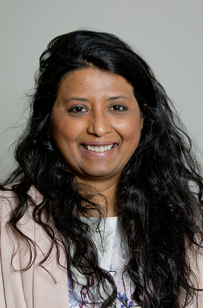New mental health resource groups could replace clusters
The current currency for non-specialist adult mental health services is the cluster. There are 21 clusters in total (although one is currently unused), which group together people with similar characteristics and needs as identified by clinical assessment and rated using a mental health clustering tool.
Although this currency has been mandated since 2012, it is not widely used by providers. Clusters have been criticised for a lack of clinical meaningfulness and the allocation of service users to a cluster places a time and administrative burden on clinicians. However, the level to which clusters are embedded in organisations varies from trust to trust.
It was originally anticipated that clusters would inform a possible tariff system for mental health services, with priced clusters forming the basis of annual contracts. However mental health providers have largely remained on block contracts.
There is now a proposal to move all healthcare onto blended payment contracts. However, the lack of a universally accepted or used currency for mental health is seen as a barrier to implementing this approach. While initially any fixed payment as part of the blended approach is likely to roll forward existing contract values, the aim is to move to payments based on the local costs of provision. This would require an agreed currency for counting mental health activity that could be costed to inform agreements.
A number of providers have developed their own local approaches to grouping patients, however the national bodies are keen to establish a consistent model.
The proposed new currency would replace the 21 clusters with 17 mental health resource groups. Five disorder groups (psychotic, common mental health, personality, eating and organic) would each have three severity levels of mild, moderate and severe. And there would be two cross-cutting groups for crisis care and secure care, where costs are believed to be driven by the type of service rather than the disorder grouping. Clinicians would review an individual’s grouping regularly.
The groupings are described as ‘an initial proposal’ with feedback requested on whether the groupings are clinically meaningful structured by disorder group and severity level and whether they would be administratively meaningful to support counting and costing.
The mental health currency consultation document suggests that the model can be created using information that is already collected by clinicians at assessment and the September 2021 change to the mental health services dataset could enable the changes to be captured nationally.
In a foreword to the proposals document, NHS England national clinical director for mental health Tim Kendall said the service needed to ensure widespread adoption, ownership and mainstream use of the new currencies in mental health. ‘Having a more clinically meaningful set of groups for mental health services to use, when combined with SNOMED CT [clinical terminology and codes] and PLICS [patient-level cost] data, will also help us to drive up the use of evidence-based interventions nationally,’ he said.
A proposed timeline would see providers using the national currency model to group patients in 2021/22. And by 2023/24, the model would be used to support the costing of activities delivered by providers.
Trudi Seneviratne (pictured), registrar at the Royal College of Psychiatrists welcomed the proposed approach. ‘In the current clusters system there is not enough emphasis on measuring patient outcomes and an unnecessarily high burden on doctors, meaning less time spent with patients,’ she said. ‘It is also inconsistent with other currencies across the health system.
‘We will continue to work with NHS Improvement to ensure that the new system is clinically appropriate and meaningful, focused on quality improvement, and less of a burden for doctors,’ Dr Seneviratne added.
Related content
We are excited to bring you a fun packed Eastern Branch Conference in 2025 over three days.
This event is for those that will benefit from an overview of costing in the NHS or those new to costing and will cover why we cost and the processes.